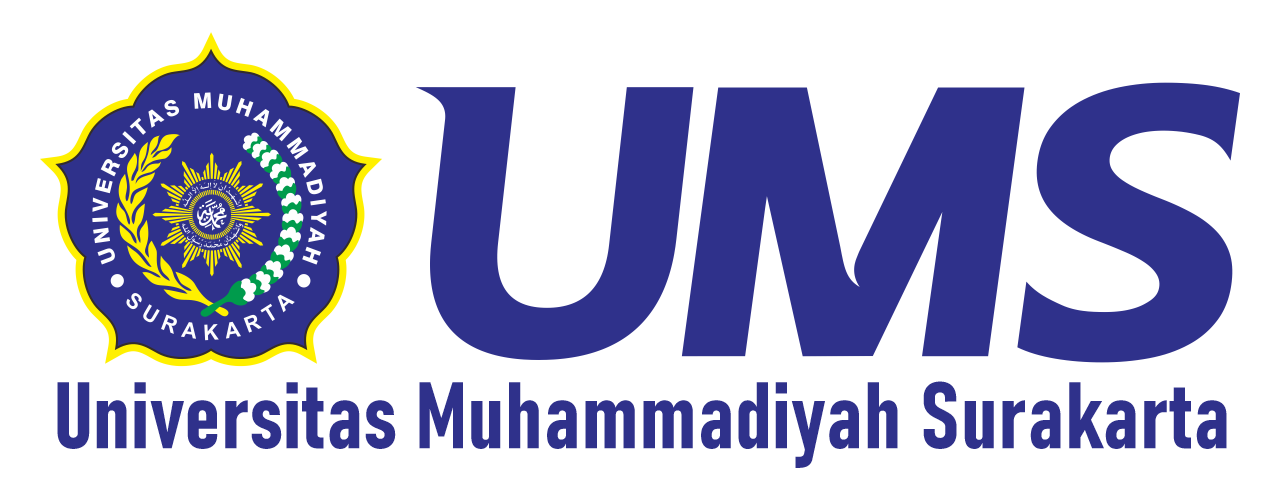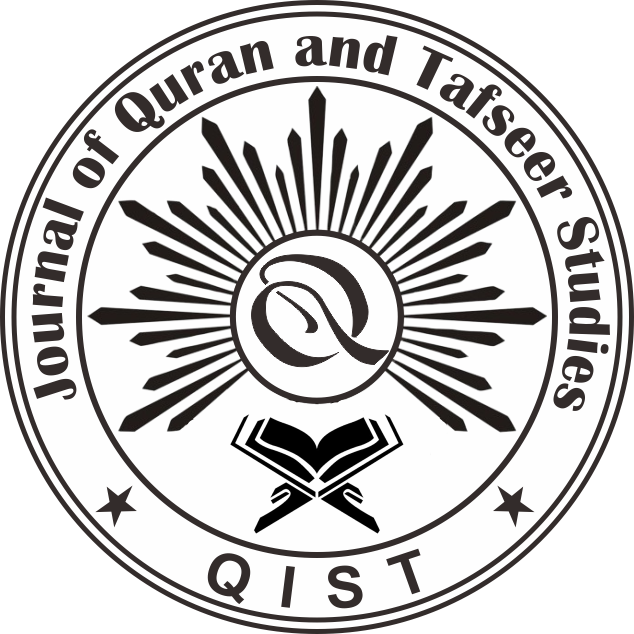The Integration of Knowledge in al-Tafsir al-'Ilmi in Improving the Interpretation Quality of Mutashabihat Verses: An Analysis of Zaghloul Muhammad Raghib El-Naggar's Thought
DOI:
https://doi.org/10.23917/qist.v4i1.8732Keywords:
Science, Religion, Tafsir, Kawniyyah VersesAbstract
The Integration of Knowledge has become significant in addressing modern scientific developments, particularly the relationship between science and religion, as secular values influence these sciences. Indonesian universities' scientific paradigm tends to focus on theoretical and philosophical foundations. However, al-Tafsir al-'Ilmi, an Islamic study, examines the relationship between religion and science, specifically Qur'anic verses and empirical sciences. This research aims to: reveal the concept of Tafsir al-'Ilmi according to Zaghloul El-Naggar, whose comprehensive approach aligns with modern scientific developments; and uncover the theory of Integration of Knowledge in Tafsir al-'Ilmi according to him. The research employs Syed Mohd Naquib Al-Attas's Integration of Knowledge theory to read Zaghloul El-Naggar's concept philosophically and applicatively. Using qualitative methods, primary, and secondary data analysis, the Integration of Knowledge according to Zaghloul El-Naggar is found to be based on Syed Mohd Naquib Al-Attas's cosmological principles, including tafsir and ta'wil. Muhkamat verses are understood through tafsir, while mutasyabihat verses through ta'wil. The principles of tafsir also apply to understanding natural phenomena, consisting of muhkamat (clear) and mutasyabihat (ambiguous). Al-tafsir al-'ilmi classifies clearly true scientific facts as muhkamat, while theories, hypotheses, and ongoing discoveries are classified as mutasyabihat.
References
[1] F. H. Malkawi, Manhajiyyah al-Takamul al-Ma'rifi Muqaddimat Fi Manhajiyyat al_islamiyyah. Herndon - USA: al-Ma'had al-'Alami Li-al-Fikr al-Islami, 1981.
[2] S. H. Nasr, "Islam and Modern Science," Cambridge, Massachusetts, USA. [Online]. Available: http://web.mit.edu/activities/mitmsa/NewSite/libstuff/nasr/nasrspeech1.html
[3] S. M. N. al-Attas, Islam and Secularism. Kuala Lumpur: ISTAC, 1993.
[4] A. Abdullah, "Profil Kompetensi Akademik Lulusan Program Pascasarjana Perguruan Tinggi Agama Islam Dalam Era Masyarakat Berubah, Paper Presented at the Meeting and Consultation of Directors of Graduate Programs of Islamic Higher Education Institutions in Hotel Setia Bu," Jakarta, 2002.
[5] P. Hoyningen-Huene, "Objectivity, value-free science, and inductive risk," Eur. J. Philos. Sci., vol. 13, no. 1, pp. 1–26, 2023, doi: 10.1007/s13194-023-00518-9. https://link.springer.com/article/10.1007/s13194-023-00518-9
[6] G. Chasanah, S. Suryaningsih, and D. Fairusi, "Analisis Integrasi Keislaman Pada Materi Kimia Pangan," JTK J. Tadris Kim. 4, vol. 2, no. Desember, pp. 168–176, 2019, [Online]. Available: http://journal.uinsgd.ac.id/index.php/tadris-kimiya/index
[7] D. Masyitoh, "AMIN ABDULLAH dan PARADIGMA INTEGRASI-INTERKONEKSI," JSSH (Jurnal Sains Sos. dan Humaniora), vol. 4, no. 1, p. 81, 2020, doi: https://doi.org/10.30595/jssh.v4i1.5973.
[8] A. Abdullah, "Multidisiplin, Interdisiplin, & Transdisiplin: Metode Studi Agama & Studi Islam Di Era Kontemporer," IB Pustaka Yogyakarta, 2020.
[9] R. J. Ukasyah, Al-Takāmul al-Ma'rifī Atharuhu fī al-Ta'līm al-Jāmi'ī wa Ḍarūratuhu al-Ḥaḍāriyyah, Fist Editi. Herndon-USA: The International Institute of Islamic Thought, 2012.
[10] Muhammad Kosim, "Ilmu Pengetahuan Dalam Islam (Perspektif Filosofis-Historis)," Tadris, vol. 3, no. 2, pp. 122–140, 2008. https://doi.org/10.19105/tjpi.v3i2.232 https://ejournal.iainmadura.ac.id/index.php/tadris/article/view/232
[11] M. Muslih, "Pengembangan Sains Islam dalam Perspektif Metodologi Program Riset Lakatos," UIN Sunan Kalijaga, Yogyakarta, 2017.
[12] S. Bin Amir, M. M. M. Noor, and A. B. A. Hilmi, "SCIENTIFIC ASSIMILATION in the INTERPRETATION of the QUR'AN: AN APPROACH to ZAGHLUL EL-NAJJAR'S WORK ENTIT LED 'tAFSIR AL-AYAH AL-KAWNIYYAH FI AL-QUR'AN AL-KARIM,'" AlBayan, vol. 10, no. 2, pp. 49–67, 2012, doi: https://doi.org/10.11136/jqh.1210.02.04.
[13] P. F. Nietarahmani, H. N. Muhammad, and A. Setiawan, "Siklus Air Dalam Qs. Ar-Ra'D Ayat 17 Menurut Al Jawahir Fi Tafsir Al-Qur'an Al-Kareem," Al Muhafidz J. Ilmu Al-Qur'an dan Tafsir, vol. 4, no. 1, pp. 137–152, 2024, doi: https://doi.org/10.57163/almuhafidz.v4i1.98.
[14] E. R. Yunita, "Semut dalam tafsir saintifik," 2021.
[15] M. Z. Rahman, "Penafsiran Zaghloul AL-Najjar Atas Ayat-ayat Reproduksi Manusia dalam Al-Qur`an," Iniversitas Islam Negeri Sunan Kalijaga, 2016.
[16] I. Habibullah and N. S. Puspitasari, "THE BIRD AERODINAMICS IN THE QUR'ᾹN (The Qur'anic Verses Study of Birds Aviation Mechanics)," J. At-Tibyan J. Ilmu Alqur'an dan Tafsir, vol. 6, no. 1, pp. 96–109, 2021, doi: https://doi.org/10.32505/at-tibyan.v6i1.1964.
[17] M. H. Ghani, M. S. Moktar, W. Nur, I. Wan, N. Anas, and A. W. Ali, "Integration of Revelation and Science in the Context of Al-Tafsir Al- ' Ilmiy : An Overview," no. 12, pp. 3331–3339, 2024, doi: https://doi.org/10.6007/IJARBSS/v14-i12/24310.
[18] F. Faizin, "Integrasi Agama dan Sains dalam Tafsir Ilmi Kementerian Agama RI," J. Ushuluddin, vol. 25, no. 1, p. 19, 2017, doi: https://doi.org/10.24014/jush.v25i1.2560.
[19] K. Anwar, "Sejarah Dan Perkembangan Filsafat Ilmu," FIAT JUSTISIA:Jurnal Ilmu Hukum, vol. 7, no. 2. 2014. doi: https://doi.org/10.25041/fiatjustisia.v7no2.138.
[20] A. W. Ibrahim, Kitabah al-Bahts al-'Ilmi, Shiyaghah al-Jadidah, Third. Jeddah: Dar al-Syuruq, 1987.
[21] S. M. N. Al-Attas, Prolegomena to the Metaphysics of Islam: An Exposition of the Fundamental Elements of the Worldview of Islam. Kuala Lumpur: ISTAC, 2001.
[22] H. F. Zarkasyi, Islamisasi Sains dan Teknologi. Ponorogo: UNIDA Gontor.
[23] Al-Khazin, Lubab al-Ta'wil Fi Ma'ani al-Tanzil. Dar al-Kutub al-'Ilmiyyah, 2004.
[24] S. Arif, "Ibn ‘Arabi and The Ambiguous Verses of the Quran: Beyond The Letter and Pure Reason," DINIKA Acad. J. Islam. Stud., vol. 4, no. 2, pp. 225–248, 2019, doi: https://doi.org/10.22515/dinika.v4i2.1711.
[25] Y. Maghrizi, "al-Takamul al-Ma'rifi wa dawruhu Fie Qiyam al-Hadharah al-Islamiyyah wa Bina al-Ummah," Ta'lim Jadid. Accessed: Dec. 15, 2023. [Online]. Available: https://www.new-educ.com/التكامل-المعرفي-ودوره-في-قيام-الحضارة
[26] H. F. Zarkasyi, "Worldview sebagai Asas Epistemologi Islam," Pemikir. dan Perad. Islam Islam., vol. 5, no. Pemikiran dan Peradaban Islam, pp. 32–33, 2005.
[27] al-A. S.M.N, Prolegomena to The Metaphysics of Islam Kuala Lumpur, ISTAC, 1995, 2. Kuala Lumpur: ISTAC, 1995.
[28] Z. Al-Najjar, Min Ayat al-I'jaz al-'Ilmi Fie Al-Qur'an al-Karim, al-Juz' al-Awwal, Second Edi. Kairo: Maktabah al-Syuruq al-Dawliyyah, 2008.
[29] A. I. A. Al-Syiddi, al-Tafsir al-'Ilmi al-Tajribu Li-al-Qur`an al-Karim, no. 1. Riyadh: Mudar al-Wathan Li-al-Nasyr, 2010.
[30] Z. An-Najjar, "Tafsir al-Ayat al-Kawniyyah," in Tafsir al-Ayat al-Kawniyyah, Kairo: Maktabah al-Syuruq al-Dawliyyah, 2009, pp. 63–38.
[31] Z. Annajar, "Madkhal Ila Dirasah I'jaz al-'Ilmi fi al-Qur`an wa al-Sunnah al-Nabawiyah." Dar al-Marefah, Beirut, p. 65, 2009.
[32] A. Afifah and L. Nurhidayah, "Tafsir 'Ilmi dalam Perspektif Ulama Klasik dan Kontemporer," Izzatuna J. Ilmu Al-Qur'an dan Tafsir, vol. 4, no. 1, pp. 1–7, 2023, doi: https://doi.org/10.62109/ijiat.v4i1.33.
[33] Ipin Tajul Aripin, "Paradigma Tafsir Ilmi dalam Perspektif Mufassir Klasik dan Modern," AHWALUNA, vol. 2, no. 1, 2023.
[34] Z. Al-Najjar, Azmah al-Ta'lim al-Mu'ashir wa hululuha al-Islamiyyah. Riyadh: Dar al-'Alamiyyah Li al-Kutub al-Islamiyyah, 1995.
[35] W. M. Nor Wan Daud, The Educational Phylosophy and Practice of Syed Muhammad Naquib Al-Attas: An Exposition of The Original Concept of Islamization. Kuala Lumpur: International Institute of Islamic Thought and Civilization, 1998.
[36] M. T. Asyur, Tafsir al-Tahrir wa al-Tanwir. Tunis: Dar al-Tunisiyyah li-Al-Nasyr, 1984.
[37] Z. Al-Najjar, "Tafsir al-Ayat al-Kawniyyat fi al-Qur'an al-Karim," Kairo: Maktabat al-Shuruq al- Dawliyyat, 2007.
[38] N. Guessoum, Islam's Quantum Question: Reconciling Muslim Tradition and Modern Science. London and New York: I.B.Tauris and Co Ltd, 2011.
[39] S. Aisyah and M. I. Mahbub, "Human Fingerprint Study from Zaqlul An-Najjar's Perspective with the STIFIn Method: Study of the Meaning of Banan in the Qur'an," QiST J. Quran Tafseer Stud., vol. 4, no. 1, pp. 171–198, Feb. 2025, doi: https://doi.org/10.23917/qist.v4i1.8440.
Submitted
Accepted
Published
How to Cite
Issue
Section
License
Copyright (c) 2025 Ilham Habibullah, Sujiat Zubaidi, Muhammad Chirzin, Alhafidh Nasution

This work is licensed under a Creative Commons Attribution 4.0 International License.
















